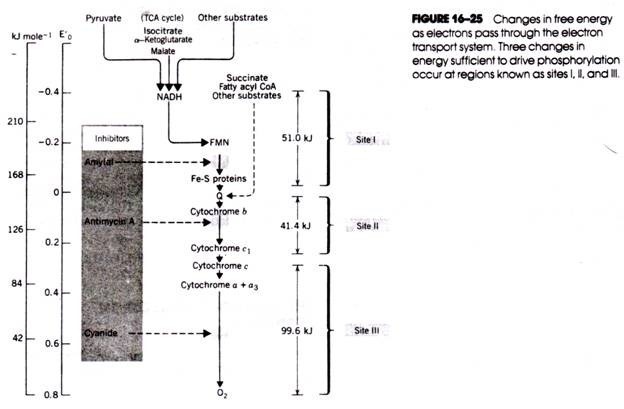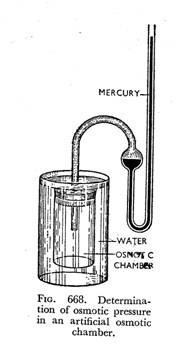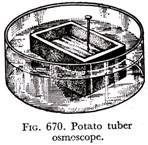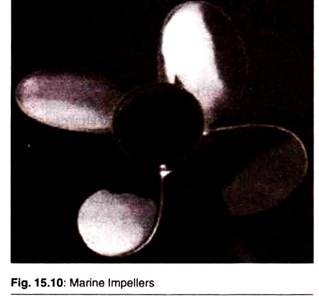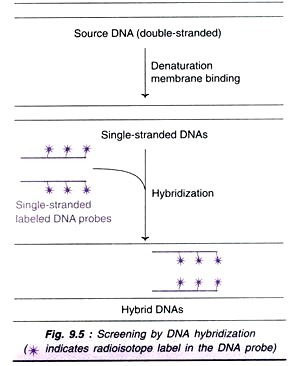Here is a term paper on ‘Immune System’. Find paragraphs, long and short term papers on ‘Immune System’ especially written for school and college students.
Term Paper on Immune System
Term Paper Contents:
- Term Paper on the Meaning of Immune System
- Term Paper on the Types of Immune System
- Term Paper on the Mechanisms of Immune System
- Term Paper on the Organs of Immune System
- Term Paper on the Disorders of Immune System
Term Paper # 1. Meaning of Immune System:
The immune system is a remarkably adaptive defence system that has evolved in vertebrates to protect them from invading pathogenic microorganisms and cancer. This system has the ability to generate an enormous variety of cells and molecules capable of specifically recognising and eliminating a limitless variety of foreign invaders.
These cells and molecules act together in an adaptable dynamic network whose ability rivals that of any other system in our body. The immune system also has other abilities besides the recognition and killing of invading pathogens. It can kill cancer cells and in experimental animals at least, it can protect the body against certain tumors. This system also prevents tissue transplantation between individuals.
Term Paper # 2. Types of Immune System:
Immunology is the science that studies the structure and functioning of the immune system.
The science began long before anyone knew about disease-causing microbes or even that individuals had an immune system that protected the body against diseases, e.g. in about c. 200 BC, Charak (the Indian ‘Father of Medicine’) gives a clear idea of Immunology just as Hippocrates (460-377 BC)—the European ‘Father of Medicine’ did.
There are two types of natural immune systems recognised in human bodies viz., humoral (antibodies) and cellular (immune cells) immune system (Fig. 33.1). These constitute the innate immunity of the body system.
These innate immunity are non-specific and protects through two mechanisms viz.:
(a) Non- specifically clears the infectious agents using preformed components, or
(b) Produces specific cells and molecules directed against the foreign invader.
This is a natural resistance which operates non-specifically during the early phase of an immune response. The innate immunity serves as the first line of defense and includes both external and internal nonspecific responses.
The external innate immunity (Skin body secretions and mucous membranes) prevents the penetration of pathogens into host tissues. If a pathogen breeches the external innate defenses and invades the tissues, the internal defense mechanisms provide protection.
Internal innate immunity includes three general mechanisms:
(a) Physiologic barriers,
(b) Phagocytosis and
(c) Inflammation.
Human immune sites are shown in Fig. 33.2.
In contrast, acquired immunity develops during a host’s lifeline and is based partly on the host’s experiences. The exposure process is called immunization.
Acquired immunity is the surveillance mechanism of vertebrates that specifically recognises foreign antigens and selectively eliminates them and, on reencountering the antigens, has an enhanced response. Once a host has been exposed to a specific disease, the host will probably not catch the disease again.
The persistence of a foreign antigen in a host initiates, or induces, acquired immunity. The recognition of and response to the antigen are highly specific. In human system there are also two types of acquired immunity—Humoral and cell-mediated. Such may last few years as active, or disappear after a short period, i.e., passive only (Fig. 33.3).
Term Paper # 3. Mechanisms of Immune System:
The immune system is a complex functional system consisting of diverse organs, tissues and cells debuted throughout most of the body. Despite the system’s complexity, its components are interrelated and act in a highly coordinated and specific manner when they recognise, eliminate and remember foreign macromolecules and cells.
Any foreign substance (living or non-living) that induces an immune response when introduced into a host is called an immunogenic, or more generally, an antigen. Most antigens are large, complex macro- molecules not recognised as such.
Only small parts of antigens, called antigenic determinants or epitopes induce and, react with immune elements such as antibodies or lymphocytes. Antibodies recognize antigens through their surface characteristics, particularly by the antigen’s pattern or shape and charge.
The binding sites of the antibody are precisely complementary or specific for the right antigenic determinants. When antigens enters the body, it usually induces the production of antibodies that react only with that particular antigen. The immune system also has pre-existing lymphocytes capable of reacting with the specific antigen.
The first time we are exposed to an antigen, the result is a primary immune response. The second exposure to the same antigen leads to a secondary immune response, which is much faster and stronger. This phenomenon is moderated by immunologic memory and accounts for a person’s long term immunity against infectious diseases.
To monitor against antigen intrusion anywhere within the body, the immune system stations the lymphoid system or immune system. The tissues are generally called lymphoid organs and include the bone marrow, thymus, lymph nodes, spleen and mucosa associated with lymphoid tissue.
Two main groups of mononuclear leukocytes also participate in immune responses-lymphocytes and macrophages Other cells crucial in the immune response are peripheral blood lymphocytes that do not express the classical characteristics of mature lymphocytes—they are called null cells.
(i) Antigen:
An antigen, when introduced into a host, induces the formation of specific antibodies and T lymphocytes that are reactive against the antigen.
Each antigen has four common characteristics:
(a) High molecular weight,
(b) Chemical complexity,
(c) Solubility, and
(d) Foreignness.
In each antigen there are usually two components, viz., epitopes (antigenic determinants) i e immunologically active portion, and haptens, i.e., non-immunogenic part of the antigen.
The chief characteristics of the antigenic determinants are:
(a) Antigenic determinants are small;
(b) All of the surface of a protein may be immunogenic and antigenic;
(c) Antigenic determinants must be accessible and are composed of assembled topographic determinants;
(d) Charge and polarity add to antigenic determinant immunogenicity;
(e) Antigenic determinants are conformation dependent and also have immunodominant building blocks;
(f) Antigen site mobility contributes to protein antigenicity;
(g) An individual’s immune response to a protein antigen (a) Is dictated by its genetic make-up; (b) Depends on the structural differences between the antigen and the recipient’s self-proteins,’ and (c) Depends on the immuno regulatory mechanisms operating in that individual’s immune systems.
(ii) Antibody:
The recognition proteins found in the serum and other body fluids of vertebrates that react specifically with the antigens that induced their formation are called antibodies. Antibodies belong to a family of globular proteins called immunoglobulin’s.
The antibodies have three important features:
(a) Binding versatility,
(b) Binding specificity, and
(c) Biological activity.
A typical antibody molecule e g IgG is made up of four polypeptide chains with a molecular weight of about 150 kd. The four chains are divided into two identical light chains and two identical heavy chains. An antibody molecule is Y-shaped, with two identical antigen-binding sites at the ends of the arms of the Y (Fig. 33, 5).
The light and heavy chains contribute to the antigen-binding sites. Each antibody molecule can bind to two identical antigenic determinants. There are five different classes of immunoglobulin’s —IgG, IgA, IgM, IgD and IgE—each with a distinctive heavy chain designated. IgG is found in blood, IgA in tissue fluid, IgM in glands, IgD in membrane and, finally, IgE also in blood.
When antibody forming cells are fused with myeloma cells, the resulting clone of cells is a hybridoma. Hybridoma cultures are the source of monoclonal antibodies of predefined antigen specificity.
(iii) Antigen-Antibody Reactions:
Serology is the science dealing with the in vitro interactions of antibodies with antigens. The interaction of an antigenic determinant and an antibody molecule is called a primary antigen-antibody reaction. Cardinal characteristic of primary antigen-antibody reactions is that they are invisible.
The conversion of invisible primary reactions to macroscopically visible ones leads to secondary antigen-antibody reactions such as precipitation and agglutination. Primarily, antigen-antibody reactions can be measured using fluorescence quenching, radioimmunasosay (RIA), enzyme linked immunosorbent assay (ELISA) and Immunofluorescence. Precipitation test is done by ring test.
(iv) Autoimmunity:
It is the mirror mage of tolerance; self-tolerance is the lack of reactivity to self, while autoimmunity reactivity to self, or the loss of tolerance to self. Self-reactivity (or auto-immunity) leads to immunity .but abnormal or excessive ant self responses may cause harm to the host.
There are a number of diseases which are considered as autoimmune type. Examples of cell-mediated autoimmune diseases are Hashimoto s thyroiditis, and insulin-dependent diabetes mellitus, while antibody mediated autoimmune diseases are Grave’s disease, rheumatoid arthritis and rheumatic fever etc.
Term Paper # 4. Organs of Immune System:
The cells of immune system generally remain localised and concentrated in anatomically defined tissues or organs to optimize the cellular interactions necessary for specific immune responses. Such organs are also the sites where foreign antigens are transported and concentrated.
However, such anatomic compartmentalization is not fixed because, as we will see later that many lymphocytes recirculate and are constantly exchanged between the circulation and immune organs.
Immune organs are classified as:
(i) Generative organs or primary lymphoid organs, where lymphocytes first express antigen receptors and attain phenotypic and functional maturity,
(ii) Peripheral organs or secondary lymphoid organs, where lymphocyte’s response to foreign antigens are initiated and develop (Fig. 6.27).
1. Primary Lymphoid Organs:
In mammals, the primary lymphoid organs include:
(a) Bone marrow, where all lymphocytes arise and
(b) Thymus, where T cells mature and reach a stage of functional competence. In birds bursa of Fabricius is the site for B cell maturation.
(a) Bone Marrow:
In mammals the generation of blood cells or the process of haematopoiesis in foetal life occurs initially in blood islands and later in liver and spleen. Following birth, this function is gradually taken over by bone marrow and increasingly by the marrow of flat bones (like sternum, vertebrae, iliac, ribs etc.) during puberty.
(b) Thymus:
Thymus is a primary lymphoid organ and is the site of T cell maturation. It is a flat, bilobed organ, situated above the heart (Fig. 6.27). Each lobe is surrounded by a capsule and is divided into lobules, which are separated from each other by trabeculae. Each lobule is organised into an outer compartment or cortex and an inner medulla.
From the early sites of haematopoiesis, the progenitor T cells migrate to thymus at about 11 day of gestation in mice and 8th or 9th week of gestation in humans and are called thymocytes.
These cells rapidly proliferate within the cortex, which is coupled with an enormous rate of cell deaths, therefore, a small subset of more mature thymocytes then migrate from cortex to medulla, where they continue to mature and finally leave the thymus through post capillary venules.
Scattered throughout the thymus are non-lymphoid epithelial cells with abundant cytoplasm, bone marrow derived dendritic cells and macrophages. In the medulla, tightly packed whorls of remnants of degenerated cells, called Hassall’s corpuscles are found. The thymus has a rich vascular supply.
2. Secondary Lymphoid Organs:
Secondary lymphoid organs are those organs which capture the antigens and provide sites where lymphocytes interact with antigen and undergo clonal proliferation and differentiation into effector cells. These are also called peripheral organs.
The following lymphoid organs play important role in immunity:
(a) Lymph Nodes:
Clustered at junction of lymphatic vessels, lymph nodes are small, nodular, bean-shaped encapsulated structures containing a reticular network packed with lymphocytes, dendritic cells and macrophages.
Each lymph node can roughly be divided into three regions:
(i) Cortex:
The outermost layer consists of mainly B cells, macrophage and follicular dendritic cells arranged in follicles. Some follicles contain central areas called germinal centres, which stain lightly with commonly used histological stains. Follicles without germinal centres are called primary follicles and those with germinal centres are secondary follicles. After antigenic challenge primary follicles enlarge into secondary follicles.
(ii) Para-Cortex:
Beneath the cortex is the para-cortex which is populated with T cells and some interdigitating dendritic cells.
(iii) Medulla:
The innermost layer is the medulla which is sparsely populated with lymphoid-lineage cells like plasma cells secreting antibody molecules.
(b) Spleen:
The spleen is a major site of immune responses to blood-borne antigens as it is not supported by any lymphatic vessels. Antigens and lymphocytes are carried to spleen through splenic artery. It is a large, ovoid secondary lymphoid organ situated high in the left abdominal cavity.
Spleen is surrounded by a capsule that extends many trabeculae into the interior of the spleen, dividing the organ into many compartments which are of two types:
(i) The red pulp and
(ii) White pulp.
(i) Red Pulp:
It consists of network of sinusoids populated by macrophages and red blood cells. Here macrophages engulf old and defective red blood cells.
(ii) White Pulp:
Dense lymphoid tissues constitute the white pulp that surrounds the branches of the splenic artery, forming a peri-arteriolar lymphoid sheath (PALS). It is populated mainly by T cells. The marginal zone, located peripheral to PALS, is rich in B cells organised into primary lymphoid follicles (Fig. 6.30 A, B).
(c) Cutaneous Immune Tissues/System:
The skin is the largest organ in the body and contains a specialised cutaneous immune system consisting of lymphocytes and APCs. Many foreign antigens gain entry into body through the skin so that many immune responses are initiated in this tissue.
The principal cells present is the epidermis include keratinocytes, melanocytes, epidermal Langerhans cells and intraepithelial T cells (Fig. 6.31). Of these, melanocytes do not play any role in immune responses. Keratinocytes contribute some activities to innate immune reactions and cutaneous inflammation.
Langerhans cells form an almost continuous meshwork that enables them to capture antigens that enter through the skin. Upon stimulation by pro-inflammatory cytokines, these cells retract their processes, lose their adhesiveness for epidermal cells and migrate into the dermis and subsequently home to lymph nodes through lymphatic vessels.
The intra-epidermal T cells may express a more restricted set of antigen receptors than do other T cells. For example, in mice these cells express receptor formed by Ƴ and δ chains that can recognise microbes that are commonly encountered at epithelial surface.
The dermis contains CD4+ and CD8+T cells and some macrophages. Many dermal T cells express a carbohydrate epitope, called the cutaneous lymphocyte antigen-I, that may play a role in specific homing of the cells to the skin.
Term Paper # 5. Disorders of Immune System:
i. Allergy:
An allergy is an immune response to a harmless antigen, such as pollen or a specific food. Allergens are substances that cause allergies and include dust, molds, pollen, certain foods and medicines such as penicillin.
IgE antibodies are normally found in small amounts in the circulation. But when the body suffers an allergy, large quantity of IgE antibodies are released into the blood (Fig. 14). These antibodies are called reagins. Allergic reaction typically results because of the action of mast cells and basophils. Both the cells are found throughout the body, especially in the linings of the nasal passage.
IgE antibodies have a property to become attached to mast cells and basophils. Thus, when an allergen binds to an IgE antibody, which is already bound to a mast cell or basophil, release of specific chemicals occurs in the mast and basophil cells. These chemicals include histamine, heparin and other activating factors.
These substances cause the following effects:
a. Dilatation of blood vessels
b. Attraction of eosinophil’s and neutrophils to the reaction site
c. Increase in permeability of capillaries
d. Contraction of smooth muscles
Certain individuals have allergies due to their genetic constitution, external factors like pollution and or a defective immune system. Allergies can usually be treated with antihistamines, drugs and other medicines. An anti-histamine is a chemical, which competes with histamine for receptor sites on the nose/skin cells. More recently, mast cell inhibitors, such as cromolyn sodium have been developed that stop the mast cells from synthesising histamine.
Different types of abnormal tissue responses occur depending on the type of tissue where the allergen-reagin occurs.
Some of them are elaborated below:
a. Anaphylaxis:
When an allergen enters the circulation, it causes widespread allergic reaction. Histamine released cause body vasodilatation and increased permeability of capillaries. A person who experiences this reaction dies of shock. Other than histamine another chemical, slow reacting substance of anaphylaxis, is released that causes spasm of the smooth muscle of the bronchiole that can cause asthma like attack and sometimes also cause death by suffocation.
b. Urticaria:
When an allergen enters specific skin areas histamine released locally causes vasodilatation that causes a red flare and increased permeability of capillaries that causes swelling of the skin. The swellings are called ‘hives’.
c. Hay Fever:
The allergen-reagin reaction occurs in the nose. Histamine release causes vasodilatation in the nasal blood vessels and increased permeability. This causes increased nasal secretion and swelling in the nose. The affected individuals also suffer from continuous sneezing.
d. Asthma:
The allergen-reagin reaction occurs in the bronchioles of the lungs. The bronchiolar smooth muscles have irregular spasms and the person has difficulty in breathing. The slow reacting substance of anaphylaxis causes these effects more than histamines.
ii. Autoimmune Diseases:
The immune system is capable of differentiating between cells of the body and that of the foreign invaders, i.e. ‘self from the ‘non-self’. In autoimmune response, the immune system turns against the ‘self’, developing antibodies against its own antigens and destroying its own cells. Some of the autoimmune diseases are myasthenia gravis, multiple sclerosis, systemic lupus erythematosus, rheumatoid arthritis and juvenile diabetes.
a. Myasthenia Gravis (MG) is muscle weakness caused by destruction of muscle- nerve connections. It is caused by antibodies that destroy the acetylcholine receptors at the neuromuscular junctions. This may lead to paralysis.
b. Multiple Sclerosis (MS) is caused by antibodies attacking the myelin of nerve cells.
c. In Systemic Lupus Erythematosus (SLE) the person produces a series of antibodies against many different tissues, i.e. connective tissues and major organs of the body, at the same time. This causes extensive damage and rapid death.
d. Rheumatoid Arthritis sufferers have damage to their joints.
e. Some evidence supports Type I diabetes as an autoimmune disease. Juvenile diabetes results from the destruction of insulin-producing cells in the pancreas.
f. In chronic anemia, the RBC is destroyed.
g. In chronic hepatitis, the liver cells are destroyed.
h. Rheumatic fever resulting from ceil death and scarring to the heart lining and the heart valves.
iii. Immunodeficiency Diseases:
Immunodeficiency diseases result from the lack or failure of one or more parts of the immune system. Affected individuals are susceptible to a number of diseases. Genetic disorders, Hodgkin’s disease, cancer chemotherapy and radiation therapy can cause immunodeficiency diseases. SCID and AIDS are two examples of immunodeficiency diseases.
a. Severe Combined Immunodeficiency Disease (SCID):
SCID results from a complete absence of the cell mediated and antibody mediated immune responses. This is a defect that exists from birth. In these individuals, the T and B-cells are absent. The individual with this defect has to be kept in a completely sterile environment to avoid infection.
Affected individuals suffer from a series of seemingly minor infections and usually die at an early age. Gene therapy is being done in a small group suffering from adenosine deaminase (ADA) deficiency, a type of SCID, to provide them with normal copies of the defective gene.
b. Acquired Immunodeficiency Syndrome (AIDS):
AIDS is the most dreaded among the immunodeficiency diseases. AIDS is a collection of disorders resulting from the destruction of T cells by the Human Immunodeficiency Virus or HIV, a retrovirus. When the body is attacked by HIV, the T4 helper cells of the cell-mediated immune response are incapacitated. This causes a breakdown of the immune system and the individual is prone to suffer from various diseases due to the lowered resistance. Thus, people with AIDS usually die from secondary infections.
